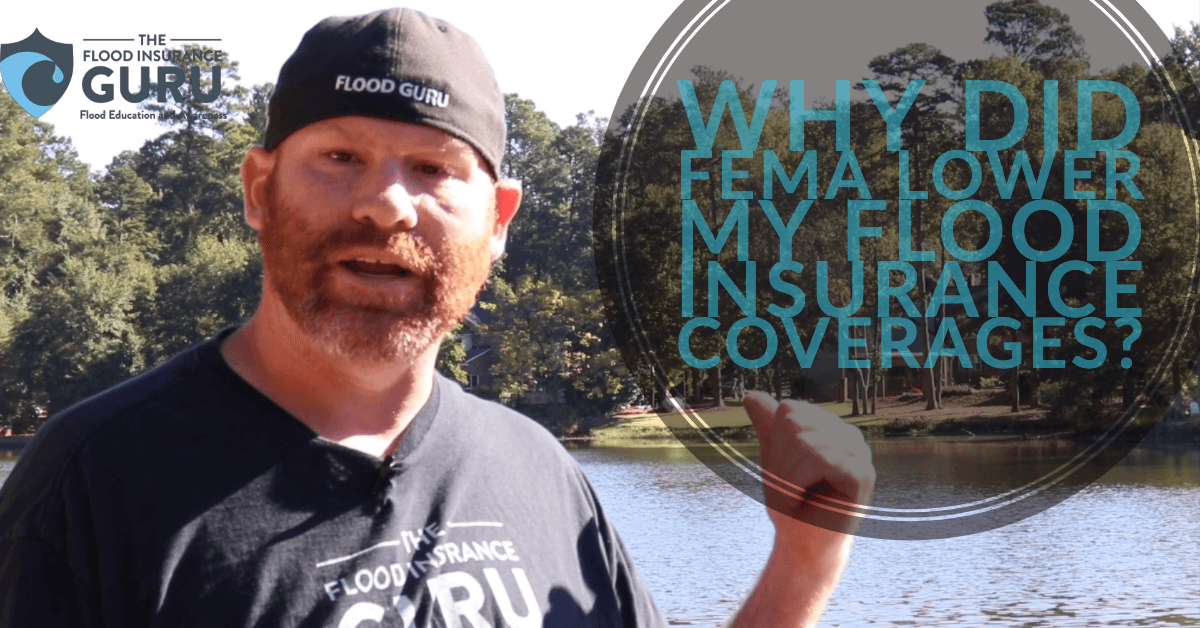Search for topics or resources
Enter your search below and hit enter or click the search icon.

Today we're talking about why did FEMA lower my flood insurance coverage?
So why would FEMA lower my insurance coverage amount? I didn't do it, so who did?
You know, there could be several factors as to why FEMA would lower your flood insurance coverage. We want to talk about the process that they go through. You know, let's talk about a normal insurance company. Let's say an auto insurance company for example. If you had a balance due with an auto insurance company and you didn't pay what would happen?
They're going to cancel your policy. Well with FEMA if there have been changes to a policy, they're not actually canceling the policy. What they're going to do is lower the coverage amount where it matches the amount of premium that's been paid.
Now, as we've mentioned, there could be a lot of different things that have caused this and we want to talk about a few. Below are some reasons why this might happen.
It happens all the time where a policy may be written with a flood zone X and it should be a flood zone A.
So why the premium difference here?

Well flood zone x is considered a low risk flood zone and a flood zone A is considered a high risk flood zone. The probability of flooding occurring is much higher so rates will be higher in these areas.
The next thing that might cause this is an incorrect elevation certificate. Let's say that you submit an elevation certificate that says a house is on a crawl space, but when you actually submitted, it's determined that the house is on a slab. This could change their ratings with FEMA.

Remember FEMA has rates based on the 9 types of Building diagrams.
Once again, FEMA may lower the coverage amount to match whatever premium has been paid. Something else that is a easy fix is what's called the primary residence form.
Remember with FEMA they have strict guidelines about primary residence. In order to be considered a primary residence the property must be lived in at least 50% of the time. There are certain documentation you have to submit or you have to sign a primary residence form. Well, if you don't sign this form within a certain timeframe what happens?
FEMA adds on that $250 surcharge, a as as long as other fees. This $250 surcharge could quickly take away from coverages because there is not enough premium on the policy. This is probably the most popular reason for coverages being dropped. This is why its very important to work with an experienced flood insurance agent that knows FEMA's requirements it could cost you in the long run.
So it's really important that you understand that when it comes to FEMA and these different guidelines of how they look at lowering these coverage amounts. They generally will send you a letter and let you know. Now, what's important to know though is if they put a date on that letter. This is not a flexible date once it passes they normally put a 30 day wait on any changes. So what's the impact of this?
Well, if your mortgage company requires that amount of coverage all the time and you've got that 30 day wait mortgage company could possibly force play flood insurance coverage for that time difference.

These are just a few things we wanted to talk about, which was wrong flood zones, primary residence forms, and elevation certificates.
There could be other reasons as well, but this is how the process works when FEMA goes to a lower coverage or why your coverage may have been lowered and you're not real sure of why.
So if you've got questions about maybe your flood insurance being lowered, if you've got questions about private flood insurance or possibly getting your property removed from a flood zone, then please reach out to us flood insurance guru.com remember the checkout our YouTube channel or our Facebook page The Flood Insurance Guru where we do these daily flood education videos. You can also give us a call, (205) 451-4294 remember,